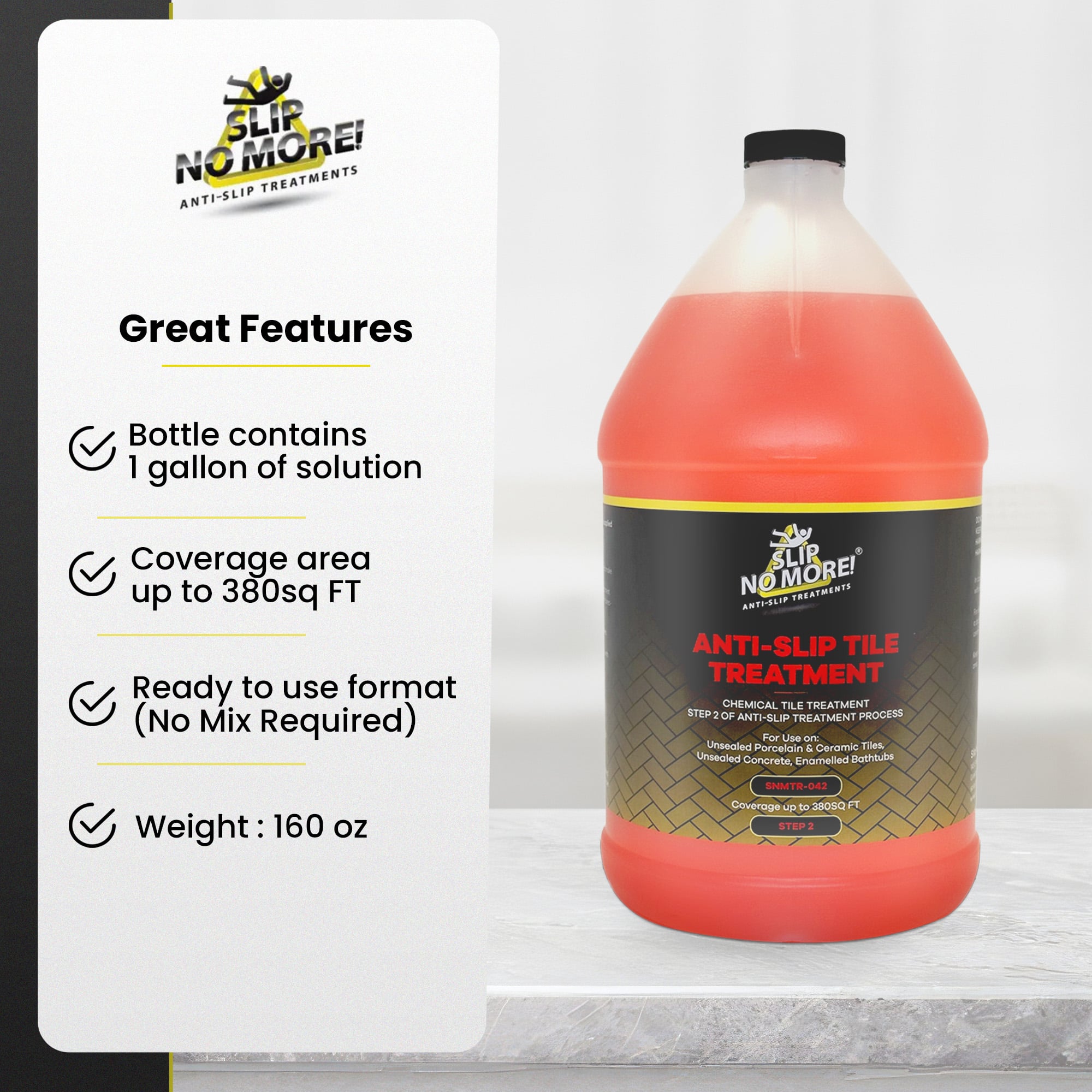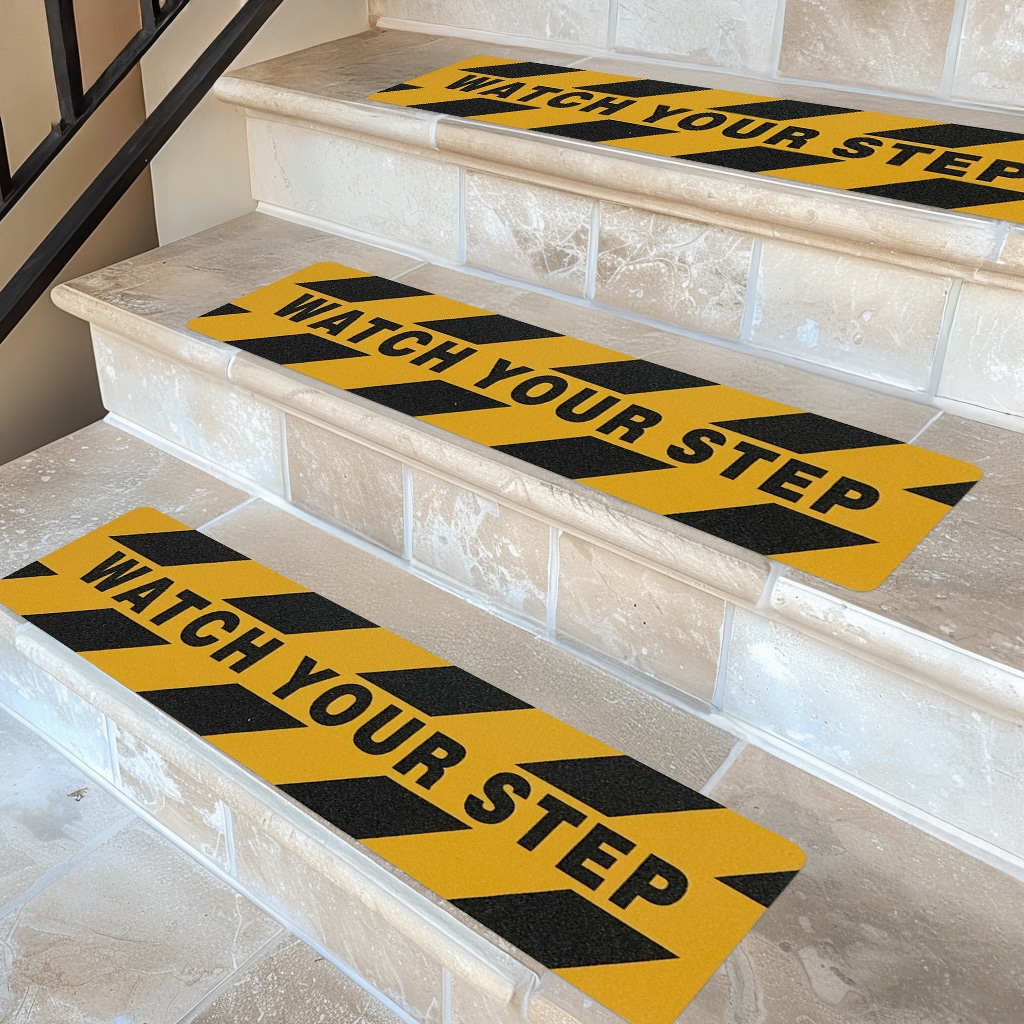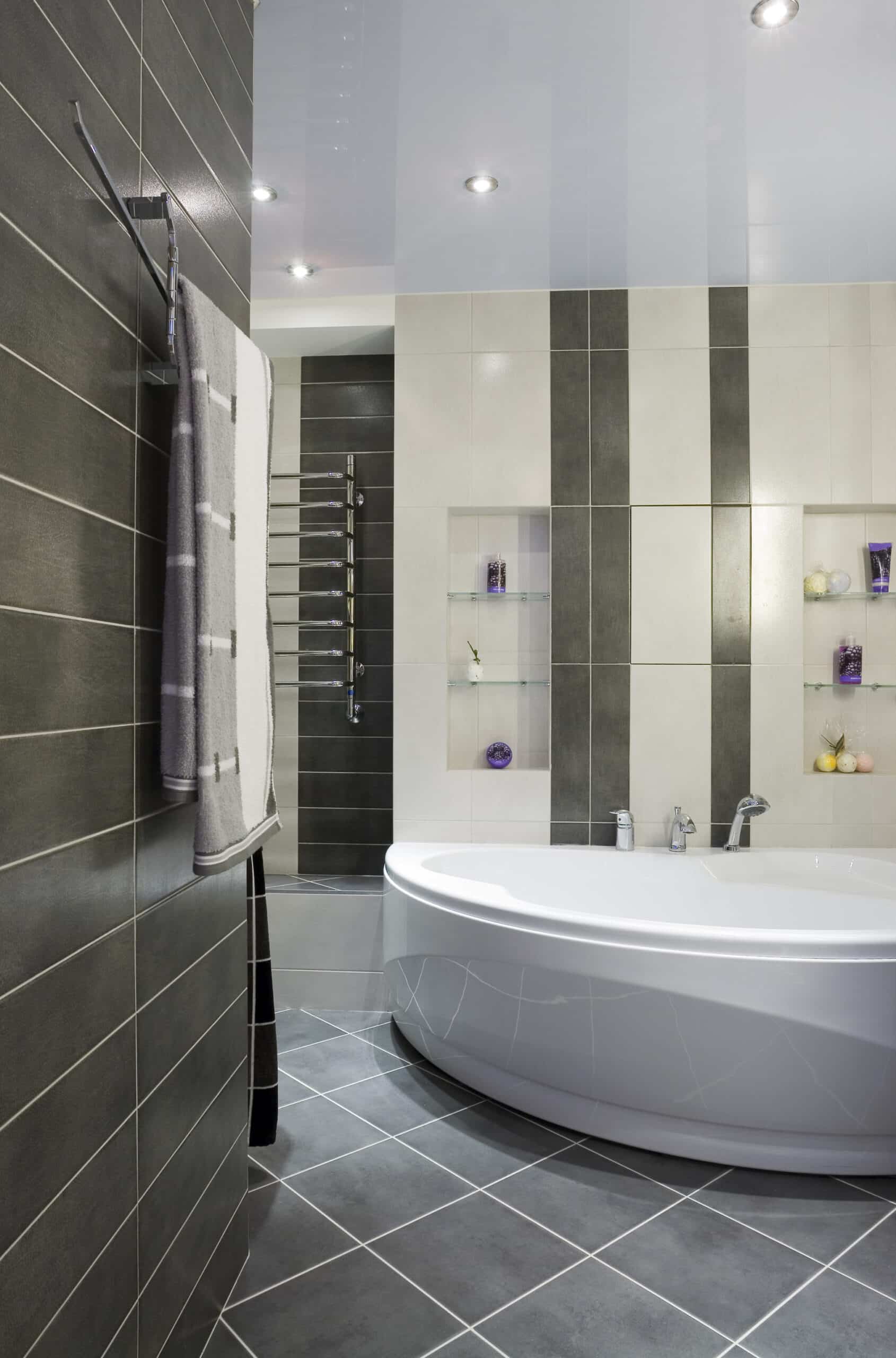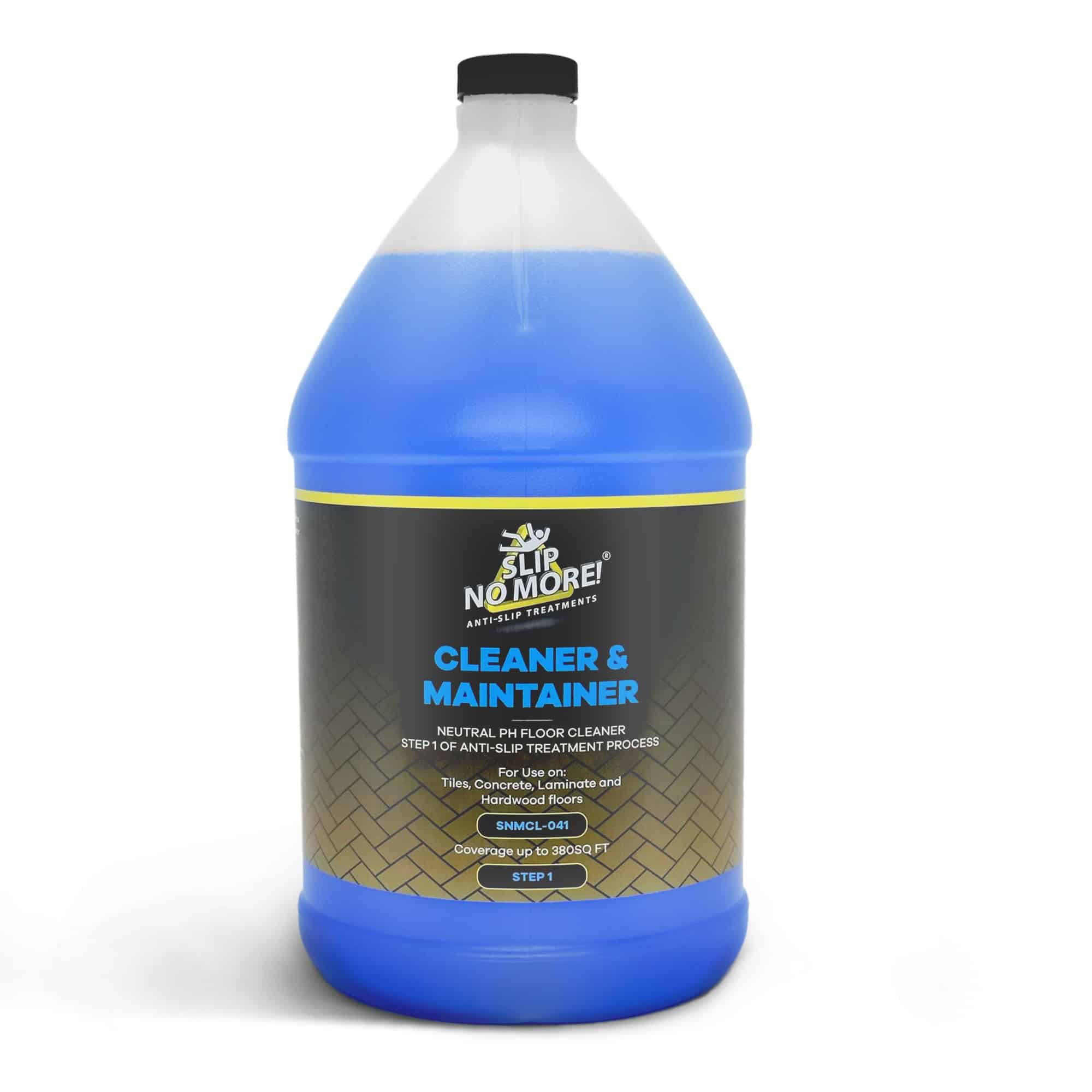With the increase in slip accidents on tiled surfaces, safety has become a top priority for homeowners and businesses. Thankfully, anti-slip treatments for tiles offer an effective solution to prevent such accidents and provide peace of mind.
This article will explore the importance of implementing anti-slip treatments for tiles and learn how they can help create a safer environment. Whether it’s your kitchen, bathroom, or commercial space, these treatments can significantly reduce the risk of slips and falls.
By incorporating anti-slip treatments for tiles into your tile maintenance routine, you can protect yourself, your loved ones, and your customers from potential injuries. We will dive into the different types of anti-slip treatments available, their application methods, and the benefits they offer. You’ll also discover tips for selecting the treatment for your specific tile surface.
Don’t let slip accidents be a constant worry. Join us as we explore the world of anti-slip treatments for tiles and take proactive steps toward a safer living and working environment.
The importance of safety in preventing slip accidents
Slip accidents can happen to anyone, anywhere, and at any time. Whether it’s a wet bathroom floor, an oily kitchen surface, or a slippery entrance in a commercial building, the consequences of a slip accident can be severe. Not only can it cause physical injuries, but it can also lead to emotional distress and financial burdens.
Implementing safety measures, such as non-slip treatments for tiles, is crucial in preventing slip accidents and creating a secure environment for everyone. These treatments provide an extra layer of protection by increasing the friction between the tile surface and footwear, reducing the chances of slips and falls.
Understanding anti-slip treatment for tiles
Anti-slip treatment for tiles is a specialized coating that is applied to the surface of the tiles to enhance their slip resistance. This anti-slip treatment for tiles works by altering the surface texture of the tiles, making them less slippery and more suitable for walking on, even when wet or contaminated with substances like oil or grease.
The effectiveness of anti-slip treatments for tiles is measured using the coefficient of friction (COF), which indicates the level of slip resistance provided by the treated surface. The higher the COF, the better the slip resistance and the lower the risk of slip accidents.
How does anti-skid treatment work?
Anti-slip treatments for tiles work by creating micro-roughness on the tile surface. This micro-roughness increases the friction between the tiles and footwear, providing better traction and reducing the likelihood of slips and falls.
The treatment penetrates the pores of the tiles, enhancing their slip resistance without altering their appearance. This means that you can maintain the beauty of your tiles while ensuring the safety of your space.
Types of anti-slip treatments
Different types of anti-skid treatments for tiles are available, each with unique features and advantages. Here are some commonly used treatments:
1. Chemical Treatments: This treatment uses acid-based solutions to alter the tile surface chemically, creating a micro-rough texture that enhances slip resistance.
2. Coatings: Coating-based treatments involve applying a protective layer on the tile surface. These coatings can be clear or colored, depending on your preference, and offer excellent slip resistance.
3. Nanotechnology: Nanotechnology-based treatments use nano-sized particles to modify the surface structure of the tiles, improving their slip resistance without altering their appearance.
4. Abrasive strips: These adhesive-backed strips are applied to the tile surface, providing additional grip and slip resistance.
Benefits of using anti-skid treatments
Incorporating anti-slip treatments for tiles into your tile maintenance routine offers several benefits, including:
1. Enhanced safety: The primary benefit of anti-skid treatments is their improved safety. By reducing the risk of slip accidents, you can create a safer environment for yourself, your family, and your customers.
2. Cost-effective: Investing in anti-slip treatments is a cost-effective solution compared to the potential expenses of slip accidents, such as medical bills, insurance claims, and legal fees.
3. Time-saving: With anti-slip treatments for tiles, you can spend less time worrying about slip accidents and more time enjoying your space. These treatments require minimal maintenance and provide long-lasting slip resistance.
4. Versatility: Anti-slip treatments can be applied to various tile surfaces, including ceramic, porcelain, marble, and granite. This means you can enhance the safety of any tiled area, indoors or outdoors.
5. Aesthetically pleasing: Anti-slip treatments for tiles are designed to maintain the tiles’ visual appeal. They do not alter the color or texture of the tiles, allowing you to preserve the beauty of your space while ensuring safety.
Steps to apply non-slip treatment
Applying anti-slip treatment to your tiles is a straightforward process that can be done by following a few simple steps:
1. Surface preparation: Thoroughly clean the tile surface to remove dirt, grease, or other contaminants. This ensures proper adhesion of the anti-slip treatment for tiles.
2. Application of the treatment: Apply the chosen anti-slip treatment for tiles according to the manufacturer’s instructions. This may involve brushing, rolling, or spraying the treatment onto the tiles.
3. Drying and curing: Allow the treatment to dry and cure as per the manufacturer’s guidelines. This ensures optimal performance and longevity of the slip-resistant coating.
4. Regular maintenance: To maintain the effectiveness of the anti-slip treatment for tiles, regularly clean the tiles using mild cleaners and non-abrasive methods. Avoid using harsh chemicals or abrasive materials that can degrade the treatment.
Maintaining the effectiveness of non-slip treatment
While anti-slip treatments for tiles provide long-lasting slip resistance, it is essential to maintain their effectiveness over time. Here are some tips to ensure the longevity of the treatment:
1. Regular cleaning: Use mild cleaners and non-abrasive methods to clean the tiles regularly. This helps remove any dirt or contaminants that can compromise the slip resistance.
2. Avoid harsh chemicals: Avoid using harsh chemicals or abrasive materials that can degrade the anti-slip treatment. Opt for gentle cleaning solutions that are safe for both the tiles and the treatment.
3. Prompt repairs: If you notice any damage or wear on the treated surface, promptly repair or replace the affected tiles. This helps maintain the overall slip resistance of the area.
4. Periodic reapplication: Depending on the type of anti-slip treatment used, periodic reapplication may be necessary to ensure ongoing slip resistance. Follow the manufacturer’s recommendations for reapplication intervals.
Other safety measures to prevent slip accidents
While anti-slip treatments for tiles are highly effective in preventing slip accidents, it is essential to implement additional safety measures to create a comprehensive safety strategy. Here are some tips to consider:
1. Good lighting: Ensure that the tiled areas are well-lit indoors and outdoors. Good lighting helps improve visibility and reduces the risk of tripping or slipping.
2. Proper footwear: Encourage appropriate footwear with slip-resistant soles, especially in areas prone to wetness or spills.
3. Warning signs: Place warning signs or floor markings in areas with slip hazards, such as wet floors or steps.
4. Regular inspections: Inspect the tiled areas for any potential slip hazards, such as loose tiles or uneven surfaces. Promptly address any issues to maintain a safe environment.
Choosing the proper anti-slip treatment
Selecting the proper anti-slip treatment for your tiles is crucial to ensure optimal slip resistance and longevity. Consider the following factors when choosing a treatment:
1. Tile material: Different materials may require specific anti-slip treatments for tiles. Ensure that the treatment you choose is compatible with the material of your tiles.
2. Level of slip resistance: Determine the level of slip resistance required for your specific space. Consider factors such as foot traffic, spillage frequency, and the presence of vulnerable individuals.
3. Durability: Assess the durability of the anti-slip treatments for tiles and its ability to withstand regular cleaning and foot traffic. Choose a treatment that offers long-lasting slip resistance.
4. Appearance: Consider the aesthetic impact of the treatment on your tiles. Look for treatments that maintain the natural beauty of the tiles without altering their appearance.
Conclusion: Ensuring safety with anti-skid for tiles
Slip accidents on tiled surfaces can have serious consequences, but with anti-slip treatments for tiles, you can significantly reduce the risk and create a safer environment. These treatments provide enhanced slip resistance, protecting yourself, your loved ones, and your customers from potential injuries.
Understanding the different types of anti-slip treatments, their application methods, and the benefits they offer is key to selecting the right treatment for your specific tile surface. By incorporating anti-slip treatments into your tile maintenance routine and implementing additional safety measures, you can enjoy peace of mind and take proactive steps towards a safer living and working environment.
Don’t let slip accidents be a constant worry. Invest in non-slip treatments for tiles and prioritize safety in your space. Take the necessary precautions today and enjoy a safer tomorrow.
About Slip No More
With more than 15 years of experience in the slip-prevention industry, our products are developed to solve the problem of slippery floors in all areas. Our flagship product, an anti-slip treatment for tiles, is widely used across all markets.
Why not follow our Facebook, Instagram, Twitter, or YouTube accounts for funny videos, informative posts, and general floor safety information? We also have loads of great reviews from our customers on Trustpilot. If you found this article helpful, take a look at our related articles:





